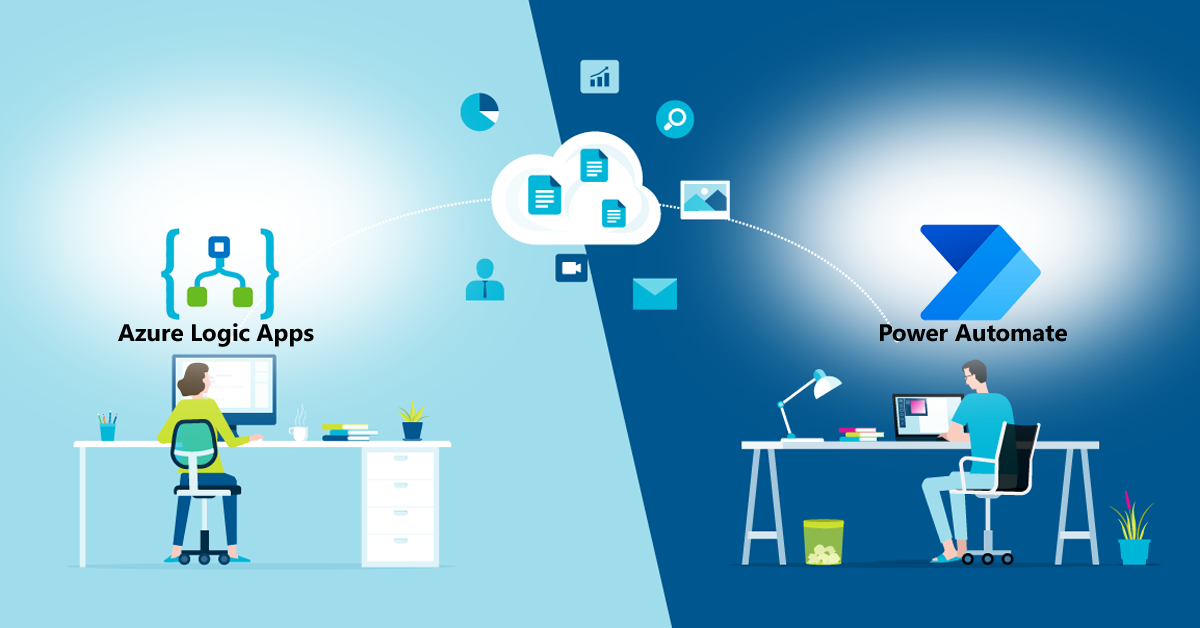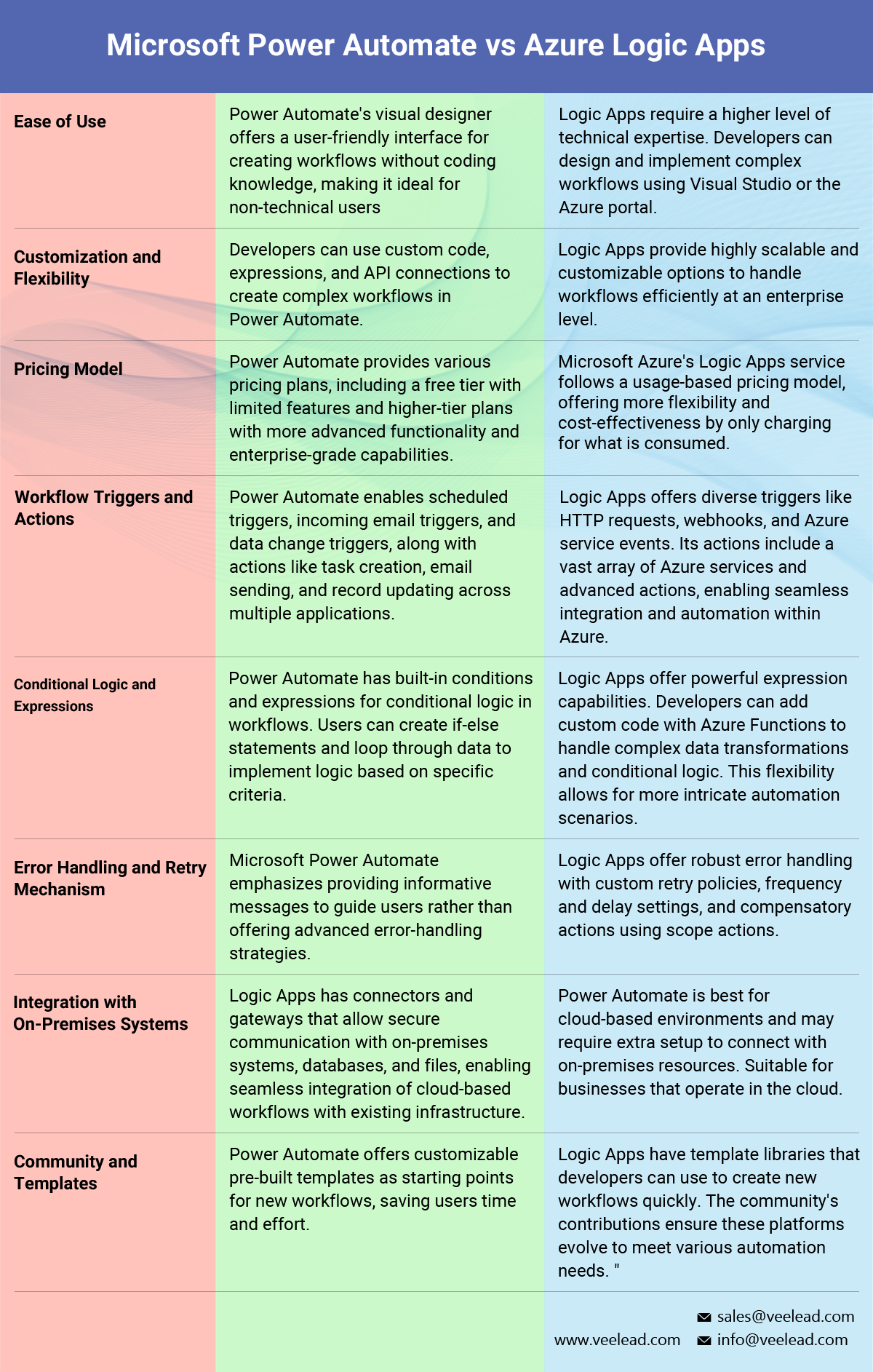

In the current digital era, businesses, regardless of their size, strive to increase efficiency and streamline their processes. Two well-known Microsoft solutions that come to mind when automating business processes are Power Automate and Logic Apps. These powerful tools can help businesses enhance productivity, save time and resources, and streamline workflows. However, determining which one is the most suitable for your specific requirements can be challenging. We will compare Power Automate and Logic Apps to help you decide.
Understanding Power Automate
Power Automate is a cloud-based service that creates automated workflows between applications and services. It has a user-friendly interface with a no-code or low-code approach, making it accessible to everyone. You can integrate various platforms such as Office 365, SharePoint, Dynamics 365, and hundreds of other connectors, automate repetitive tasks, and streamline your business processes.
Exploring Logic Apps
Logic Apps is an advanced Azure service for creating complex workflows, utilizing a graphical designer to connect predefined actions and triggers. This platform allows you to design highly scalable integration solutions for various business scenarios easily.
Microsoft Power Automate vs Logic Apps: Key Differences
Power Automate and Logic Apps are both workflow services that automate processes. However, there are differences in their scope and environments. Let’s explore their key differences to understand their strengths:
Conclusion
Power Automate and Logic Apps are powerful automation tools that cater to different user needs. Power Automate offers a user-friendly interface and is ideal for business users looking to automate simple tasks and workflows. Logic Apps, on the other hand, provides advanced customization options and is better suited for developers who require complex workflows and integration scenarios.
Assess your specific requirements, technical expertise, and workflow complexity to determine which tool aligns better with your needs. Whether you choose Power Automate or Logic Apps, you’ll benefit significantly from process automation, improved productivity, and streamlined business operations.
Are you looking for expert guidance? Veelead can help you determine the best course of action and choose the perfect platform for your needs. Contact us to schedule a call with our Power Automate Service consultants.
Related Reading:
Choosing Microsoft Power Automate for RPA | Is It the Right Choice?
Attended RPA Vs Unattended RPA | What Are the Differences?
Power Automate Vs Automation Anywhere Vs UiPath | What to Choose?



